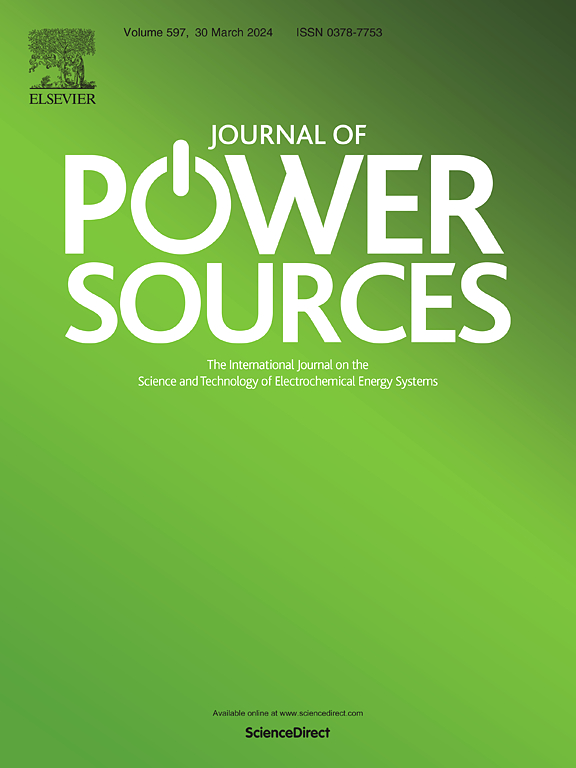Novel high-entropy oxides with ultra-long cycle life as cathode materials for aqueous zinc-ion batteries
IF 8.1
2区 工程技术
Q1 CHEMISTRY, PHYSICAL
引用次数: 0
Abstract
Aqueous zinc-ion battery (AZIB), as a promising economic and environmentally friendly battery, has been plagued by the instability and structural collapse of cathode materials during charge-discharge process for many years, which has seriously hindered its commercial application. At present, researchers have used intercalation, surface coating and other means to inhibit the dissolution of cathode materials, but they have not achieved satisfactory results. In order to fundamentally improve the stability of AZIB cathode, we prepared a high-entropy oxide cathode material (Co0.2Cr0.2Fe0.2Mn0.2Ni0.2)3O4 (CCFMnO) derived from the concept of high entropy. Because of the unique entropy stabilization effect and strong lattice distortion effect of high-entropy materials, CCFMnO shows satisfactory structural stability. Compared with the low-entropy material Fe3O4, the CCFMnO nanomaterial achieved enhanced electrochemical performance due to the synergistic effect of multiple elements, exhibiting an excellent specific capacity (283 mAh g−1 at 0.1 A g−1), good rate capability, and superior cycle stability (66.61 % capacity retention after 90000 cycles at 2 A g−1). In addition, we reveal the storage mechanism and structural evolution of Zn2+ during the intercalation/deintercalation of CCFMnO by a series of in-situ and ex-situ characterization methods. This work opens the way to explore new AZIB cathode materials, which will promote the development of AZIB.

求助全文
约1分钟内获得全文
求助全文
来源期刊

Journal of Power Sources
工程技术-电化学
CiteScore
16.40
自引率
6.50%
发文量
1249
审稿时长
36 days
期刊介绍:
The Journal of Power Sources is a publication catering to researchers and technologists interested in various aspects of the science, technology, and applications of electrochemical power sources. It covers original research and reviews on primary and secondary batteries, fuel cells, supercapacitors, and photo-electrochemical cells.
Topics considered include the research, development and applications of nanomaterials and novel componentry for these devices. Examples of applications of these electrochemical power sources include:
• Portable electronics
• Electric and Hybrid Electric Vehicles
• Uninterruptible Power Supply (UPS) systems
• Storage of renewable energy
• Satellites and deep space probes
• Boats and ships, drones and aircrafts
• Wearable energy storage systems
 求助内容:
求助内容: 应助结果提醒方式:
应助结果提醒方式:


